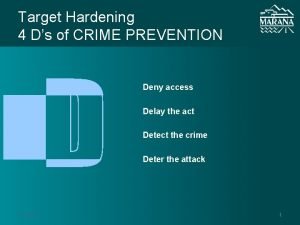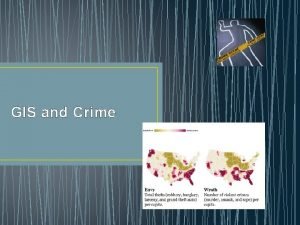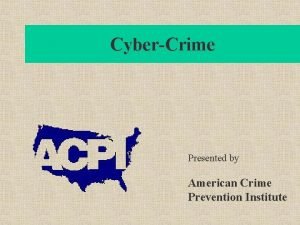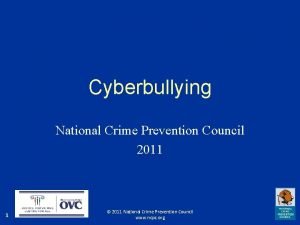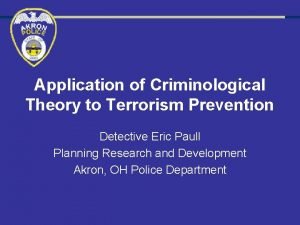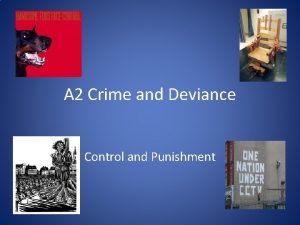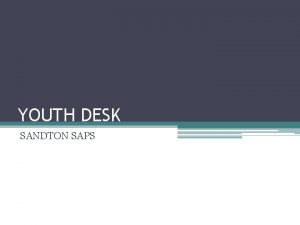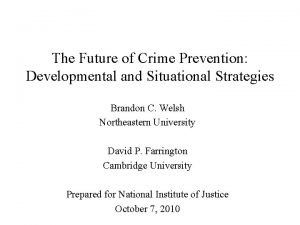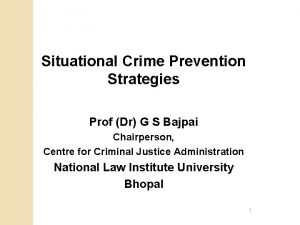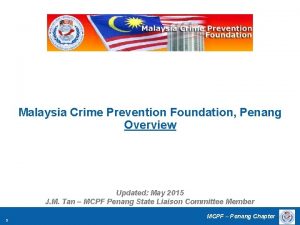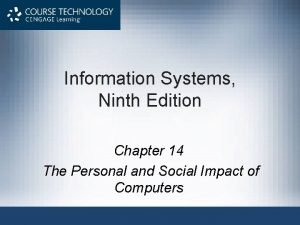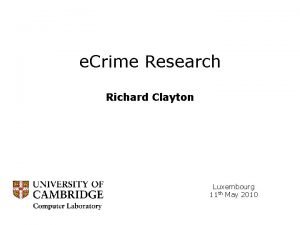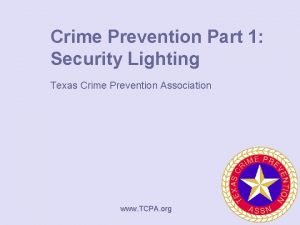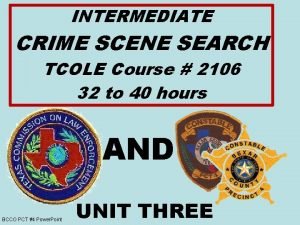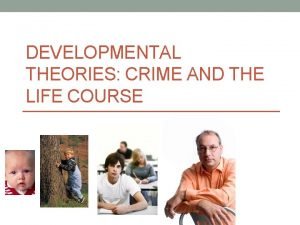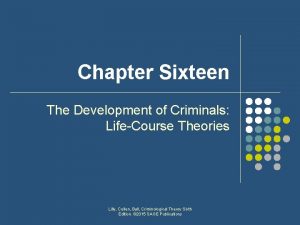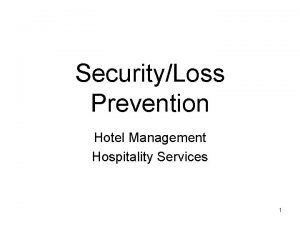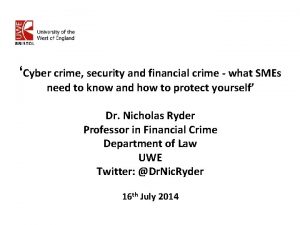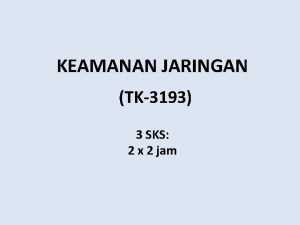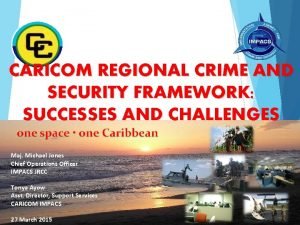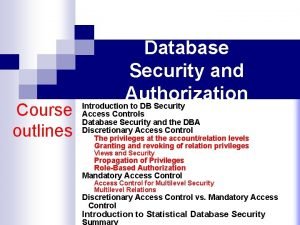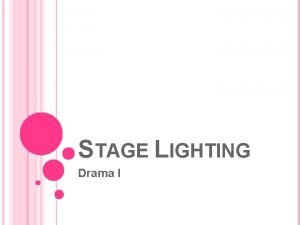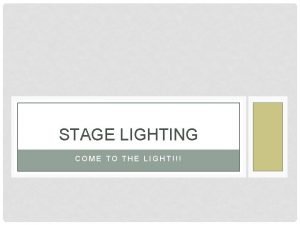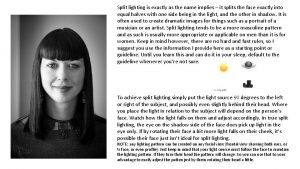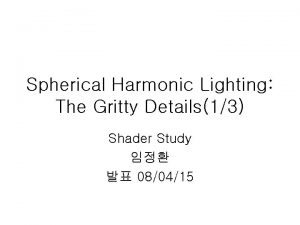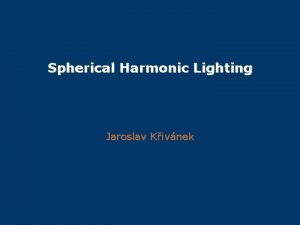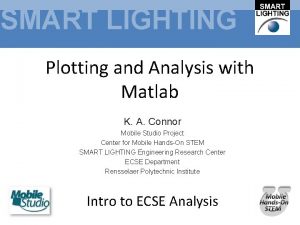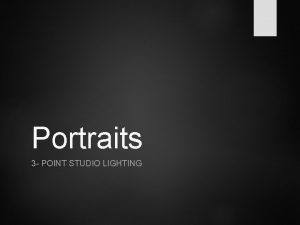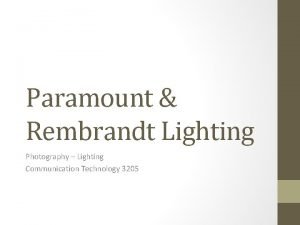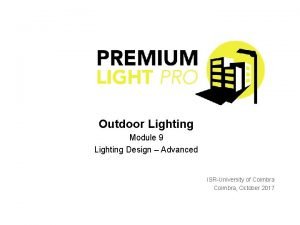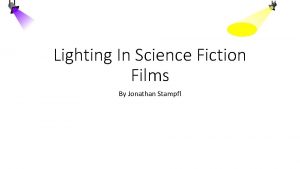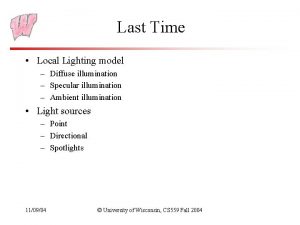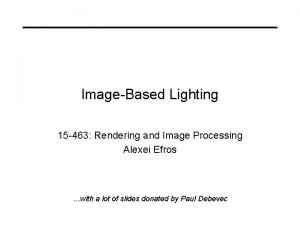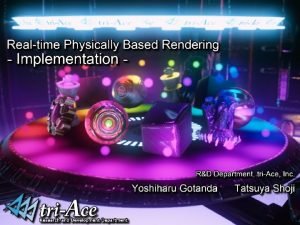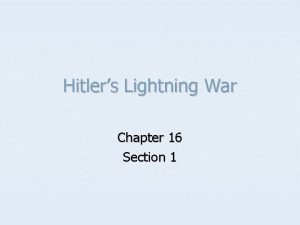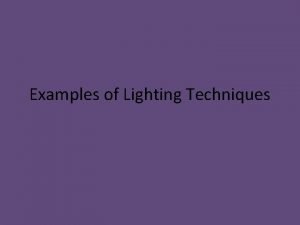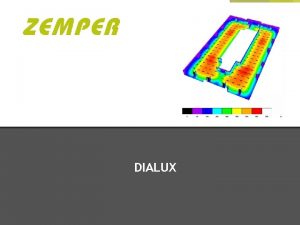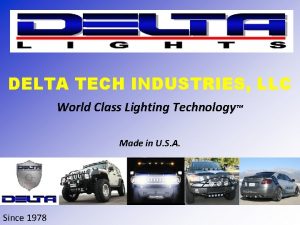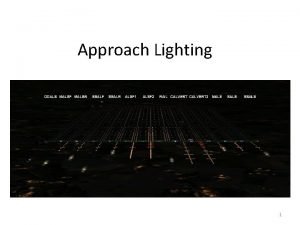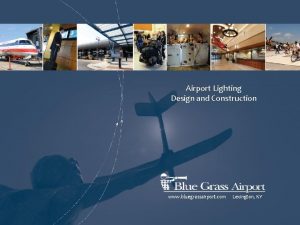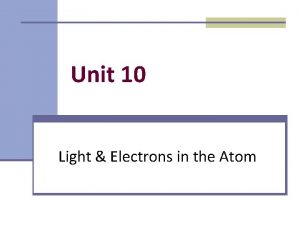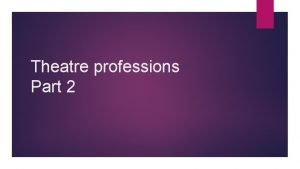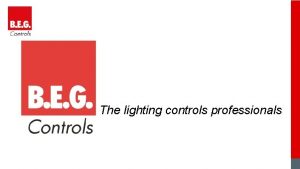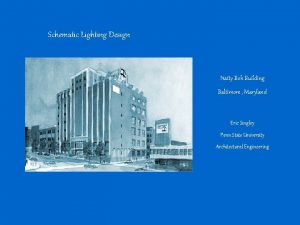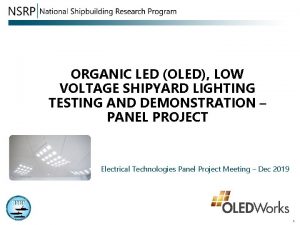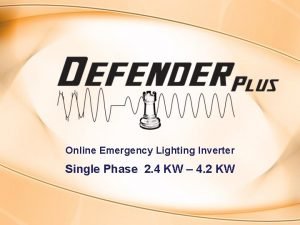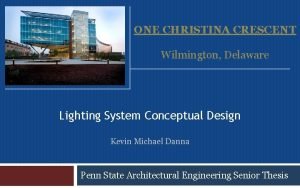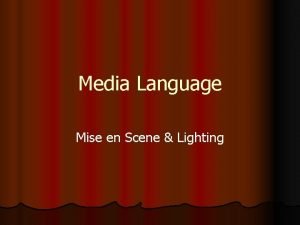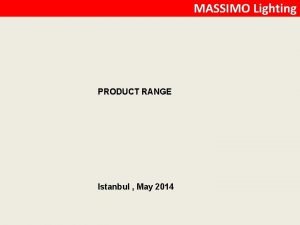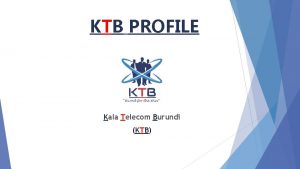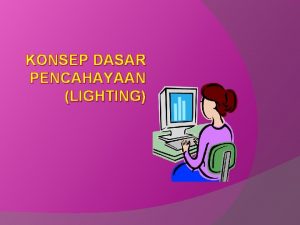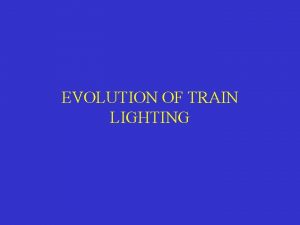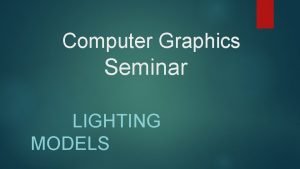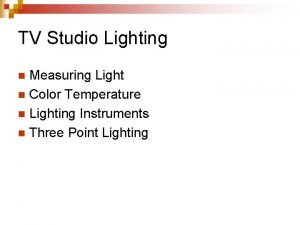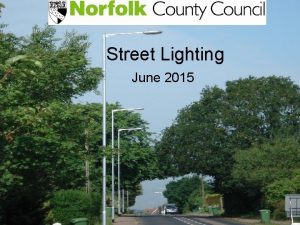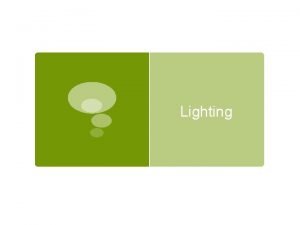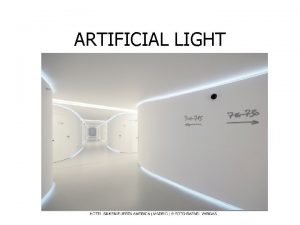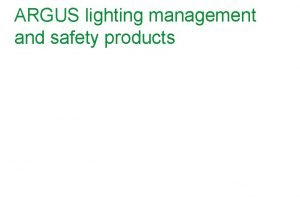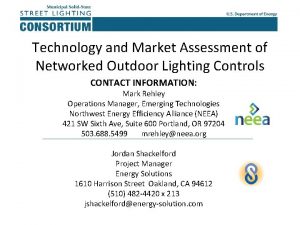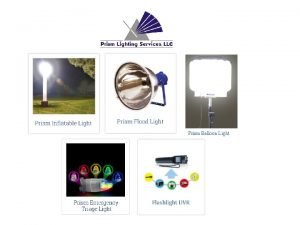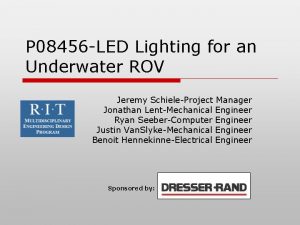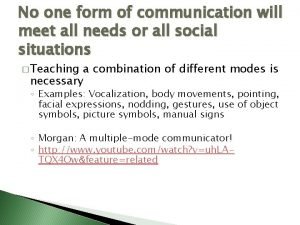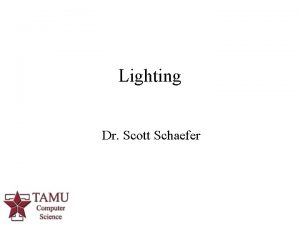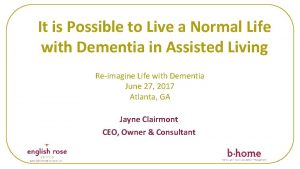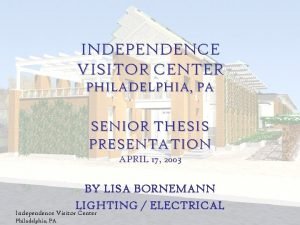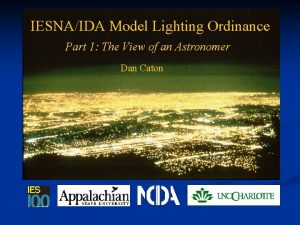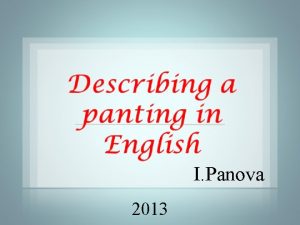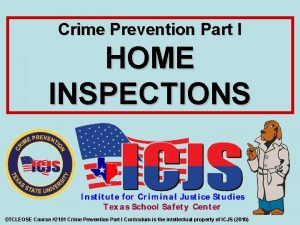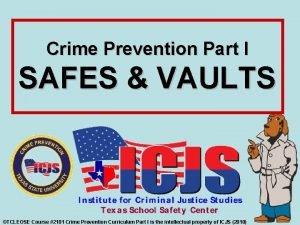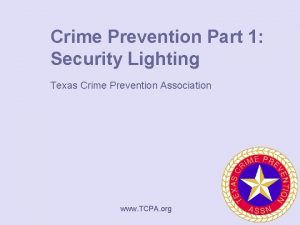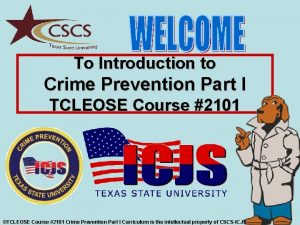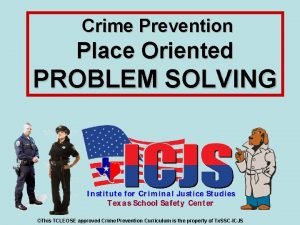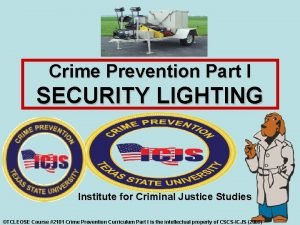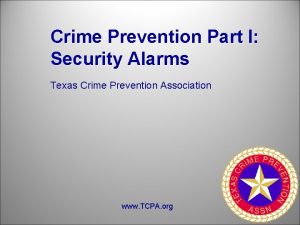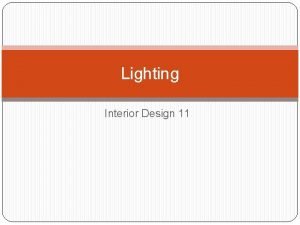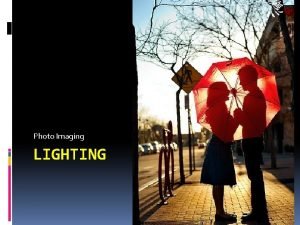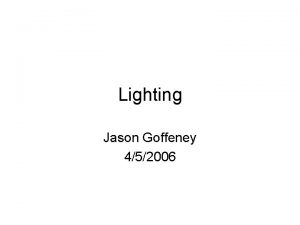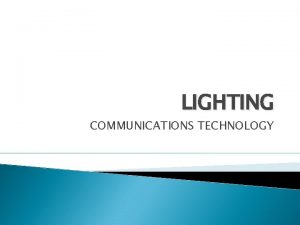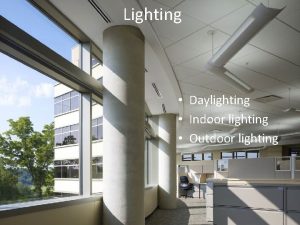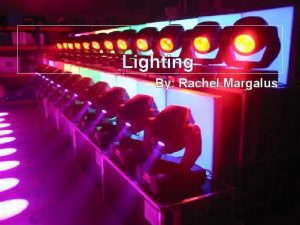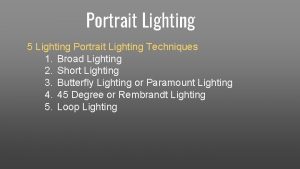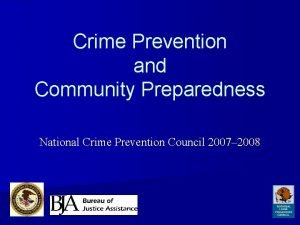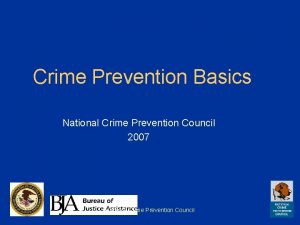Crime Prevention Part I SECURITY LIGHTING TCLEOSE Course






































































































- Slides: 102

Crime Prevention Part I SECURITY LIGHTING ©TCLEOSE Course #2101 Crime Prevention Curriculum Part I is the intellectual property of ICJS (2010)

Learning Objectives • Learning Objective(s): The student will be able to identify, define and explain define watt, lumen, and foot-candle. • Learning Objective(s): The student will be able to identify explain and distinguish the difference between the following types of light sources; Incandescent, Mercury, vapor, Fluorescent and Low and high-pressure sodium vapor. • Learning Objective(s): The student will be able to identify and define photoelectric cell and timer. • Learning Objective(s): The student will be able to make cost-effective recommendations for proper security lighting ©TCLEOSE Course #2101 Crime Prevention Curriculum Part I is the intellectual property of ICJS (2009)

SECURITY LIGHTING: LIGHTING Provides a level of illumination to clearly identify persons or objects (Large or small) ©TCLEOSE Course #2101 Crime Prevention Curriculum Part I is the intellectual property of ICJS (2009)

SECURITY LIGHTING: LIGHTING Creates a psychological deterrent to criminal activity in the area being protected. ©TCLEOSE Course #2101 Crime Prevention Curriculum Part I is the intellectual property of ICJS (2009)

AREAS INCLUDE Parking lots: five foot-candles to two foot-candles Driveways four to five foot-candles Sidewalks four foot-candles Windows and doorways: four foot-candles ©TCLEOSE Course #2101 Crime Prevention Curriculum Part I is the intellectual property of ICJS (2009)

SECURITY LIGHTING HISTORY Idea that “LIGHT” provides protection is as old as civilization. Lighting has evolved from candle and wood power, to gas lights to our modern day electric lights. Today exist a multitude of lighting tools ©TCLEOSE Course #2101 Crime Prevention Curriculum Part I is the intellectual property of ICJS (2009)

©TCLEOSE Course #2101 Crime Prevention Curriculum Part I is the intellectual property of ICJS (2009)

“OBJECTIVES of Lighting” Ideally “GOOD LIGHTING” system reproduces daylight High visibility – low glare Transitional Lighting providing gradual light level change from a brightly lit area to dark area ©TCLEOSE Course #2101 Crime Prevention Curriculum Part I is the intellectual property of ICJS (2009)

Glare reduces our eyes’ ability to see properly at night Glare adds excess clutter that contributes to visual confusion Well designed lighting does not add glare to the environment We see the objects being lit and not the light source itself.

“TRANSITIONAL Lighting” Good Lighting is a cost-efficient deterrent to crime What is good lighting? The lighting system must furnish high visibility and low glare. The evenness (balance) of outdoor light is more important than the absolute level. ©TCLEOSE Course #2101 Crime Prevention Curriculum Part I is the intellectual property of ICJS (2009)

“TRANSITIONAL Lighting” Too much lighting can be a hazard If resultant glare of brightness makes visibility difficult, it is hazardous because of the difficulty in seeing clearly in to the surrounding area. ©TCLEOSE Course #2101 Crime Prevention Curriculum Part I is the intellectual property of ICJS (2009)

“TRANSITIONAL Lighting” When an individual leaves a brightly lit area and walks into a dark area, his/her vision is momentarily reduced and vulnerability increased. ©TCLEOSE Course #2101 Crime Prevention Curriculum Part I is the intellectual property of ICJS (2009)

©TCLEOSE Course #2101 Crime Prevention Curriculum Part I is the intellectual property of ICJS (2009)

“TRANSITIONAL Lighting” Transitional lighting merely provides a gradual light level change from a brightly lit area to a dark area. A lower light level is employed adjacent to the bright area to help provide a safe transition. ©TCLEOSE Course #2101 Crime Prevention Curriculum Part I is the intellectual property of ICJS (2009)

©TCLEOSE Course #2101 Crime Prevention Curriculum Part I is the intellectual property of ICJS (2009)

“COVERAGE FACTOR” The coverage factor is the minimum number of directions from which a point or area should be lit depending upon the use of the area. Coverage factor of two is required for parking areas and for protective lighting to reduce the effect of shadows between automobiles, etc. ©TCLEOSE Course #2101 Crime Prevention Curriculum Part I is the intellectual property of ICJS (2009)

©TCLEOSE Course #2101 Crime Prevention Curriculum Part I is the intellectual property of ICJS (2009)

“DEFINITIONS” Watt – term used to measure the amount of electrical energy consumed. Lumen – The lamps (light bulbs) used in lighting equipment are rated in lumens. The lumen is frequently used as a term to express the output of a light source. Lumen is actually an expression of a light’s efficiency as measured by lumens per watt. ©TCLEOSE Course #2101 Crime Prevention Curriculum Part I is the intellectual property of ICJS (2009)

“DEFINITION - Continued” Foot-candle – This is another unit of illumination. It is defined as the illumination on a surface of a square foot in area on which one lumen of lights is uniformly distributed Kilowatt: Kilowatt 1000 watts LPW – Lumen Per Watt ©TCLEOSE Course #2101 Crime Prevention Curriculum Part I is the intellectual property of ICJS (2009)

©TCLEOSE Course #2101 Crime Prevention Curriculum Part I is the intellectual property of ICJS (2009)

“DEFINITION - Continued” Reflector – A device used to redirect light by the process of reflection Refractor – A glass band, globe, or bowl designed to control the direction of light by using prisms ©TCLEOSE Course #2101 Crime Prevention Curriculum Part I is the intellectual property of ICJS (2009)

©TCLEOSE Course #2101 Crime Prevention Curriculum Part I is the intellectual property of ICJS (2009)

“DEFINITION - Continued” Luminaries – A complete lighting device consisting of a light source, together with its globe, reflector, and housing. The pole, post, or bracket is not considered a part of the luminaries ©TCLEOSE Course #2101 Crime Prevention Curriculum Part I is the intellectual property of ICJS (2009)

“QUALITY OF LIGHTING” This term refers to the distribution of brightness and color rendition in a particular area. The term is generally used to describe how light can favorably contribute to visual performance, visual comfort, ease, scene, safety, and aesthetics for specific tasks. ©TCLEOSE Course #2101 Crime Prevention Curriculum Part I is the intellectual property of ICJS (2009)

©TCLEOSE Course #2101 Crime Prevention Curriculum Part I is the intellectual property of ICJS (2009)

©TCLEOSE Course #2101 Crime Prevention Curriculum Part I is the intellectual property of ICJS (2009)

“VISUAL FACTORS” The ease with which objects are seen as largely dependent upon four visual factors These factors play an important part when planning effective security lighting. ©TCLEOSE Course #2101 Crime Prevention Curriculum Part I is the intellectual property of ICJS (2009)

©TCLEOSE Course #2101 Crime Prevention Curriculum Part I is the intellectual property of ICJS CSCS-ICJS (2009)

“VISUAL FACTORS” Understanding these visual factors is important for designing new buildings or modifying existing buildings. Keep these four factors in mind when recommending security changes even if it is merely the blueprint that is presented to you for suggestions. ©TCLEOSE Course #2101 Crime Prevention Curriculum Part I is the intellectual property of ICJS (2009)

“ 4 - VISUAL FACTORS” 1. Size – larger objects are more readily seen and reflect a greater amount of light. 2. Brightness – bright or light-colored surfaces reflect more light than dark colored objects. Brightly polished silver surfaces reflect a greater intensity of light than a dark or tarnished reflector surface. ©TCLEOSE Course #2101 Crime Prevention Curriculum Part I is the intellectual property of ICJS (2009)

©TCLEOSE Course #2101 Crime Prevention Curriculum Part I is the intellectual property of ICJS (2009)

“ 4 - VISUAL FACTORS” 3. Contrast – is important in that an object placed against a strongly contrasting background seems to reflect more light to the eye than when the object and the background are alike 4. Time – is critical because it requires less time to see accurately under good illumination than it does with poor lighting ©TCLEOSE Course #2101 Crime Prevention Curriculum Part I is the intellectual property of ICJS (2009)

©TCLEOSE Course #2101 Crime Prevention Curriculum Part I is the intellectual property of ICJS (2009)

TYPES OF OUTSIDE LIGHTING Continuous Lighting Emergency Lighting Moveable Lighting Stand-by Lighting ©TCLEOSE Course #2101 Crime Prevention Curriculum Part I is the intellectual property of ICJS (2009)

“CONTINIOUS LIGHTING” Continuous lighting, lighting the most familiar type of outdoor security lighting Designed to provide either of two specific results: greater projection (glare method) controlled lighting ©TCLEOSE Course #2101 Crime Prevention Curriculum Part I is the intellectual property of ICJS (2009)

©TCLEOSE Course #2101 Crime Prevention Curriculum Part I is the intellectual property of ICJS CSCS-ICJS (2009)

“CONTINIOUS LIGHTING” It is described by some security experts as a “barrier of light” light and is particularly effective for lighting boundaries around a facility approaches to the site. ©TCLEOSE Course #2101 Crime Prevention Curriculum Part I is the intellectual property of ICJS (2009)

Continuous Lighting - Cont’d Glare method originated in prisons and correctional institutions ©TCLEOSE Course #2101 Crime Prevention Curriculum Part I is the intellectual property of ICJS (2009)

©TCLEOSE Course #2101 Crime Prevention Curriculum Part I is the intellectual property of ICJS (2009)

Continues Lighting - Cont’d Used when light glare does not annoy or interfere with neighboring or adjacent properties institutions Limits intruders ability to see inside a protected area Strong visual and psychological deterrent ©TCLEOSE Course #2101 Crime Prevention Curriculum Part I is the intellectual property of ICJS (2009)

©TCLEOSE Course #2101 Crime Prevention Curriculum Part I is the intellectual property of ICJS (2009)

“STANDBY LIGHTING” A second type of outside security lighting is stand-by lighting. Stand-by lighting systems generally consist of continuous systems, but are designed for reserve or stand-by use or to supplement continuous systems. ©TCLEOSE Course #2101 Crime Prevention Curriculum Part I is the intellectual property of ICJS (2009)

“STANDBY LIGHTING” These systems are engaged either automatically or manually when the continuous system is inoperative or when there is a need for additional light. ©TCLEOSE Course #2101 Crime Prevention Curriculum Part I is the intellectual property of ICJS (2009)

Permission obtained from Foto. Search to use picture in this presentation ©TCLEOSE Course #2101 Crime Prevention Curriculum Part I is the intellectual property of ICJS CSCS-ICJS (2009)

Standby Lighting - Cont’d Engaged automatically or manually for system failure or for additional lighting Most useful to provide selective light to a particular portion of an area ©TCLEOSE Course #2101 Crime Prevention Curriculum Part I is the intellectual property of ICJS (2009)

©TCLEOSE Course #2101 Crime Prevention Curriculum Part I is the intellectual property of ICJS (2009)

“ MOVEABLE LIGHTING” A third system uses moveable lighting hardware This system is manually operated and usually is made up of moveable search or flood lights Temporary lighting located in selected places. Also know as portable lighting ©TCLEOSE Course #2101 Crime Prevention Curriculum Part I is the intellectual property of ICJS (2009)

©TCLEOSE Course #2101 Crime Prevention Curriculum Part I is the intellectual property of ICJS (2009)

Moveable Lighting - Cont’d Portable lighting hardware (hand-held or can be towed) Adjustable search or flood lights that can be focused Very useful at construction sites, road-side vehicle search stations or entry process points, such as gates to military installations ©TCLEOSE Course #2101 Crime Prevention Curriculum Part I is the intellectual property of ICJS (2009)

©TCLEOSE Course #2101 Crime Prevention Curriculum Part I is the intellectual property of ICJS (2009)

“EMERGENCY LIGHTING” The fourth system is emergency lighting. Emergency lights may duplicate any or all of the other three types of lighting. Generally, the emergency lighting system is used in time of power failure or other emergencies when other systems are inoperative

“EMERGENCY LIGHTING” The unique feature of the emergency system is that is it based on an alternate power source such as; as –gas-powered generator or gas–batteries ©TCLEOSE Course #2101 Crime Prevention Curriculum Part I is the intellectual property of ICJS (2009)

©TCLEOSE Course #2101 Crime Prevention Curriculum Part I is the intellectual property of ICJS (2009)

TAKE A 10 -MINUTE BREAK

TYPES OF LIFGTING SOURCES Incandescent Mercury Vapor Metal Halide Fluorescent High-Pressure Sodium Vapor Low-Pressure Sodium Vapor ©TCLEOSE Course #2101 Crime Prevention Curriculum Part I is the intellectual property of ICJS (2009)

©TCLEOSE Course #2101 Crime Prevention Curriculum Part I is the intellectual property of ICJS (2009)

“CANDESCENT LIGHTING” Low initial cost and provide good color rendition. Short life- span (500 to 10, 000 hours) and are low in AMP efficiency (17 to 23 LPW) as compared to other light sources. High end expensive in operating costs. Used in homes and small lighting systems ©TCLEOSE Course #2101 Crime Prevention Curriculum Part I is the intellectual property of ICJS (2009)

“CANDESCENT LIGHTS” ©TCLEOSE Course #2101 Crime Prevention Curriculum Part I is the intellectual property of ICJS (2009)

“MERCURY VAPOR” Emits a purplish-white color cause by electric current passing through tube of conducting luminous gas. Good lumen maintenance and long life span (24, 000 hours) (45 -63 LPW). ©TCLEOSE Course #2101 Crime Prevention Curriculum Part I is the intellectual property of ICJS (2009)

©TCLEOSE Course #2101 Crime Prevention Curriculum Part I is the intellectual property of ICJS (2009)

“METAL HALIDE” Similar in appearance to Mercury vapor but provides a light source of higher luminous efficiency and better color rendition. Rated hours are short when compared to 24, 000 hours plus of mercury lamps. Rated at (80 -100 LPW).

Best source of available street lighting for both highway safety and crime prevention is Metal Halide! ©TCLEOSE Course #2101 Crime Prevention Curriculum Part I is the intellectual property of ICJS (2009)

“FLOURESCENT” Good color rendition and high lamp efficiency (67 to 83 LPW) as well as a long life (12, 000 to 20, 000 hours). Temperature sensitive and low ambient temperatures decrease their efficiency. Cannot project light over long distances, commonly used indoors ©TCLEOSE Course #2101 Crime Prevention Curriculum Part I is the intellectual property of ICJS (2009)

FLOURESCENT ©TCLEOSE Course #2101 Crime Prevention Curriculum Part I is the intellectual property of ICJS (2009)

©TCLEOSE Course #2101 Crime Prevention Curriculum Part I is the intellectual property of ICJS (2009)

HIGH PRESSURE SODIUM VAPOR Used for exterior lighting such as parking garages used inside for commercial and industrial applications. Constructed on same principal as mercury vapor but emits golden white to light pink color (100 to 140 LPW) life expectancy 24, 000 hours). ©TCLEOSE Course #2101 Crime Prevention Curriculum Part I is the intellectual property of ICJS (2009)

High-Pressure Sodium Vapor ©TCLEOSE Course #2101 Crime Prevention Curriculum Part I is the intellectual property of ICJS (2009)

©TCLEOSE Course #2101 Crime Prevention Curriculum Part I is the intellectual property of ICJS (2009)

©TCLEOSE Course #2101 Crime Prevention Curriculum Part I is the intellectual property of ICJS (2009)

“LOW PRESSURE SODIUM VAPOR Similar in principle to other type vapor lights but provides much brighter LPW ratio (135 to 180) life expectancy 18, 000 hours. It distorts or inhibits color rendition. © (2009) ©TCLEOSE Course #2101 Crime Prevention Curriculum Part II is is the intellectual property of of ICJS CSCS-ICJS

©TCLEOSE Course #2101 Crime Prevention Curriculum Part I is the intellectual property of ICJS (2009)

Never recommended for all night gas Stations or convenience stores because it distorts color rendition. ©TCLEOSE Course #2101 Crime Prevention Curriculum Part I is the intellectual property of ICJS (2009)

Automatic Lighting Control Three methods of automatic light control used to regulate hours of operations are; Timer Photoelectrical cell operates a set of contacts through a pre-set Turn on/off cycle and responds to light level to turn on and off. Motion detector ©TCLEOSE Course #2101 Crime Prevention Curriculum Part I is the intellectual property of ICJS (2009)

“TIMER” A timer is essentially an electric clock which operates a set of contacts through a preset turn on/turn off cycle Some timers multi-programmable turning lights off and on many times within a 24 -hour period. ©TCLEOSE Course #2101 Crime Prevention Curriculum Part I is the intellectual property of ICJS (2009)

“TIMER” Timers are versatile and used to operate appliances such as radios and televisions as well as lights. ©TCLEOSE Course #2101 Crime Prevention Curriculum Part I is the intellectual property of ICJS (2009)

©TCLEOSE Course #2101 Crime Prevention Curriculum Part I is the intellectual property of ICJS (2009)

©TCLEOSE Course #2101 Crime Prevention Curriculum Part I is the intellectual property of ICJS (2009)

“PHOTOELECTRIC” With the photocell, the amount of light falling on the cell determines whether the light is off or on. The photocell works on current and resistance principles. ©TCLEOSE Course #2101 Crime Prevention Curriculum Part I is the intellectual property of ICJS (2009)

LIGHT SENSORS ©TCLEOSE Course #2101 Crime Prevention Curriculum Part I is the intellectual property of ICJS (2009)

“PHOTOELECTRIC” If there is a low light level hitting the photocell, the resistance of the cell is lowered and current flows to energize the light. As the light level increases, the resistance also increases and cuts off the current turning the light off ©TCLEOSE Course #2101 Crime Prevention Curriculum Part I is the intellectual property of ICJS (2009)

©TCLEOSE Course #2101 Crime Prevention Curriculum Part I is the intellectual property of ICJS (2009)

“MOTION DETECTOR” Flood lights or front door lighting now on the commercial market that have a motion detector built into the luminaries and turn the lights on and off. ©TCLEOSE Course #2101 Crime Prevention Curriculum Part I is the intellectual property of ICJS (2009)

MOTION DETECTOR ©TCLEOSE Course #2101 Crime Prevention Curriculum Part I is the intellectual property of ICJS (2009)

“GUIDELINES TO RECOMMENDING A LIGHTING SYSTEM” The location of lights, the direction of beams, and the types of general and backup systems that you recommend depends upon a number of variables. When considering these variables remember cost factors verses security and hit a balance ©TCLEOSE Course #2101 Crime Prevention Curriculum Part I is the intellectual property of ICJS (2009)

“GUIDELINES TO RECOMMENDING A LIGHTING SYSTEM” These variables include: the size for the secured area; area the amount of light needed to adequately protect the facility; the nature of other protective systems that the facility is already using; the type & nature of the facility protected.

Guidelines to Recommending a Lighting System - continued As a rule of thumb, consider the following formula: Approximately one to two footcandles is typical light level for high traffic streets and interchanges Level of four foot-candles is typical for residential streets. ©TCLEOSE Course #2101 Crime Prevention Curriculum Part I is the intellectual property of ICJS (2009)

Guidelines to Recommending a Lighting System - continued As a rule of thumb, consider the following formula: Crime deterrent lighting, by comparison, usually approaches a lighting level of 10 footcandles. ©TCLEOSE Course #2101 Crime Prevention Curriculum Part I is the intellectual property of ICJS (2009)

Mounting Heights Mounting heights selected for outdoor lighting can have a significant impact on the cost and quality of the illumination provided. Higher mounting heights permit use of higher wattage light sources which are more efficient and so less costly to operate. ©TCLEOSE Course #2101 Crime Prevention Curriculum Part I is the intellectual property of ICJS (2009)

©TCLEOSE Course #2101 Crime Prevention Curriculum Part I is the intellectual property of ICJS (2009)

Mounting Heights Using higher wattage light sources also means that fewer of them are needed. Efficiency cannot be the only factor considered in selecting a mounting height or device. The suitability of the techniques must be assessed first. ©TCLEOSE Course #2101 Crime Prevention Curriculum Part I is the intellectual property of ICJS (2009)

©TCLEOSE Course #2101 Crime Prevention Curriculum Part I is the intellectual property of ICJS (2009)

©TCLEOSE Course #2101 Crime Prevention Curriculum Part I is the intellectual property of ICJS (2009)

Mounting Heights - continued Thus, while taller poles are more expensive, expensive their additional cost may be offset because fewer poles are needed. Cost is offset by life-cycle economies resulting from lower lamp operating cost and reduced maintenance requirement. ©TCLEOSE Course #2101 Crime Prevention Curriculum Part I is the intellectual property of ICJS (2009)

©TCLEOSE Course #2101 Crime Prevention Curriculum Part I is the intellectual property of ICJS (2009)

©TCLEOSE Course #2101 Crime Prevention Curriculum Part I is the intellectual property of ICJS (2009)

©TCLEOSE Course #2101 Crime Prevention Curriculum Part I is the intellectual property of ICJS (2009)


Q UE S T I O NS

DEFINE & PROCESS 1. Define watt, lumen, and foot-candle. 2. Distinguish the difference between the following types of light sources: A. Incandescent B. Mercury vapor C. Fluorescent D. Low and high-pressure sodium vapor 3. 4. 5. Define photoelectric cell and timer. What is a lumen? What is LPW mean? ©TCLEOSE Course #2101 Crime Prevention Curriculum Part I is the intellectual property of ICJS (2009)

SOURCES Handbook of Loss Prevention and Crime Prevention (Fourth Edition) Lawrence J. Fennelly. Healy, Richard J. Design for Security. New York: John Wiley and Sons, Inc. , 142 -144, 151. The discussion on types of lighting was drawn entire from this publication. It should be noted that all reference to residential lighting was added to the discussion by Koepsell-Girard and Associates. Conservation and Crime. Washington, DC: U. S. Government printing Office, 16. Light Concepts for Conservation #123. Siemon, Joyce and Larry Vardell. “A Bright Answer to the Crime and Energy Question”. ©TCLEOSE Course #2101 Crime Prevention Curriculum Part I is the intellectual property of ICJS (2009)

Contact Information INSTITUTE for CRIMINAL JUSTICE STUDIES 350 N. Guadalupe, Suite 140, PMB 164 San Marcos, Texas 78666. 512 -245 -6232 www. criminaljusticestudies. com ©TCLEOSE Course #2101 Crime Prevention Part I Curriculum is the intellectual property of ICJS (2009)

BREAK TIME Take 10 -minutes
 Primary prevention secondary prevention tertiary prevention
Primary prevention secondary prevention tertiary prevention Private securty
Private securty 4 ds of security
4 ds of security Crimegis
Crimegis American crime prevention institute
American crime prevention institute National crime prevention council cyberbullying
National crime prevention council cyberbullying Situational crime prevention definition
Situational crime prevention definition Ron clarke 1992
Ron clarke 1992 Youth desk saps
Youth desk saps Developmental crime prevention
Developmental crime prevention 25 situational crime prevention techniques
25 situational crime prevention techniques Mcpf penang
Mcpf penang Crime prevention 9th edition
Crime prevention 9th edition Cyber crime prevention luxembourg
Cyber crime prevention luxembourg Security lighting texas
Security lighting texas 2106 crime scene investigation
2106 crime scene investigation Developmental criminology
Developmental criminology Life course theory crime
Life course theory crime Loss prevention and security in hotels
Loss prevention and security in hotels Financial crime cyber security
Financial crime cyber security Csi computer crime and security survey
Csi computer crime and security survey Caricom crime and security strategy
Caricom crime and security strategy How to install a lintel in a single brick wall
How to install a lintel in a single brick wall Course number and title
Course number and title Course interne moyenne externe
Course interne moyenne externe Stanford web security course
Stanford web security course Technology availabilityê
Technology availabilityê Fast twitch and slow twitch muscles
Fast twitch and slow twitch muscles Osi security architecture in network security
Osi security architecture in network security Security guide to network security fundamentals
Security guide to network security fundamentals Wireless security in cryptography
Wireless security in cryptography Visa international security model
Visa international security model Electronic mail security in network security
Electronic mail security in network security Explain about cnss security model
Explain about cnss security model E commerce security policy
E commerce security policy Software security touchpoints
Software security touchpoints Security guide to network security fundamentals
Security guide to network security fundamentals Security guide to network security fundamentals
Security guide to network security fundamentals Part whole model subtraction
Part whole model subtraction Unit ratio definition
Unit ratio definition Part part whole
Part part whole Technical descriptions
Technical descriptions Sorry bar
Sorry bar The phase of the moon you see depends on ______.
The phase of the moon you see depends on ______. Minitab adalah
Minitab adalah Parts of stage lighting
Parts of stage lighting Functions of stage lighting
Functions of stage lighting Split lighting definition
Split lighting definition Spherical harmonics lighting
Spherical harmonics lighting Spherical harmonic lighting
Spherical harmonic lighting Lighting matlab
Lighting matlab 3 point lighting examples
3 point lighting examples Paramount lighting photography
Paramount lighting photography Longitudinal uniformity street lighting
Longitudinal uniformity street lighting Science fiction lighting
Science fiction lighting Local lighting model
Local lighting model Image processing lighting
Image processing lighting Ibl image based lighting
Ibl image based lighting Chapter 16 section 1 hitlers lighting war
Chapter 16 section 1 hitlers lighting war Contoh gambar floor plan
Contoh gambar floor plan Faa ac 150/5345-43j obstruction light
Faa ac 150/5345-43j obstruction light Front lighting photography examples
Front lighting photography examples Urban lighting
Urban lighting Dialux emergency lighting tutorial
Dialux emergency lighting tutorial Delta tech lights
Delta tech lights Red side row bar
Red side row bar Akdot
Akdot Instrument hold line
Instrument hold line Bluegrassairport.com
Bluegrassairport.com Atom lighting
Atom lighting Theatre lighting designer salary
Theatre lighting designer salary Lc&d lighting controls
Lc&d lighting controls Natty boh building
Natty boh building Led shipyard lighting
Led shipyard lighting Dspm inverter
Dspm inverter Delaware lighting system
Delaware lighting system Mise en scene lighting
Mise en scene lighting Massimo lighting
Massimo lighting Kala
Kala Konsep pencahayaan
Konsep pencahayaan Lighting in film analysis
Lighting in film analysis Train lighting system
Train lighting system Lighting models in computer graphics
Lighting models in computer graphics Calvert approach lighting system
Calvert approach lighting system Tv studio lighting
Tv studio lighting Ncc street lighting
Ncc street lighting Nonstructural lighting
Nonstructural lighting Entstehung der glühbirne
Entstehung der glühbirne Diy led reef lighting
Diy led reef lighting Katus lighting
Katus lighting Konsep dasar pencahayaan
Konsep dasar pencahayaan Artificial light types
Artificial light types Argus lighting
Argus lighting Airinet
Airinet Balloon lights construction for sale
Balloon lights construction for sale Rov led
Rov led Eccus lighting
Eccus lighting Rembrandt lighting
Rembrandt lighting Lighting and color
Lighting and color Lighting and color
Lighting and color Lighting theater
Lighting theater Model lighting ordinance
Model lighting ordinance Panova lighting
Panova lighting


